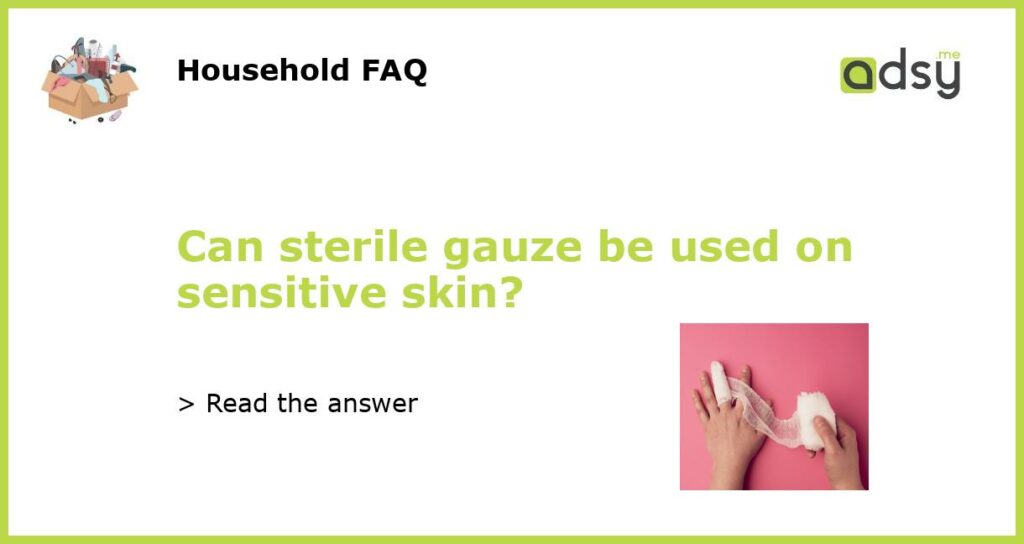Using Sterile Gauze on Sensitive Skin: What You Need to Know
If you have sensitive skin, you are likely cautious about using certain products or materials that may cause irritation or discomfort. When it comes to wound care, one question that may arise is whether sterile gauze can be safely used on sensitive skin. In this article, we will explore this topic and provide you with the information you need to make an informed decision.
Understanding Sensitive Skin
Sensitive skin is a common condition characterized by increased skin reactivity and susceptibility to irritation. People with sensitive skin often experience symptoms such as redness, itching, burning, and dryness. The exact cause of sensitive skin is not fully understood, but it can be triggered by factors such as allergens, irritants, temperature changes, and certain skincare products.
Contact dermatitis, a type of skin inflammation caused by direct contact with an irritant or allergen, is a common concern for individuals with sensitive skin. This can make selecting appropriate wound care materials especially important, as using the wrong products can lead to further irritation and complications.
The Role of Sterile Gauze in Wound Care
Sterile gauze is widely used in wound care for its absorbent properties and ability to create a barrier that protects the wound from external contaminants. It is commonly used to clean and cover wounds, promote healing, and prevent infection. However, the question remains as to whether sterile gauze is suitable for individuals with sensitive skin.
Choosing the Right Sterile Gauze for Sensitive Skin
When selecting sterile gauze for sensitive skin, it is important to consider a few key factors. Firstly, opt for gauze made from hypoallergenic materials. Hypoallergenic gauze is specifically designed to minimize the risk of allergic reactions and skin irritation. Look for products that are labeled as hypoallergenic or suitable for sensitive skin.
Additionally, consider the texture and softness of the gauze. Rough or abrasive gauze can further irritate sensitive skin. Look for gauze that is non-woven, which is typically softer and more gentle on the skin. Non-woven gauze is made from fibers that are pressed into a sheet rather than woven, resulting in a smoother texture.
Proper Application and Care
Proper application and care are essential when using sterile gauze on sensitive skin. Firstly, make sure to cleanse the wound and surrounding area with a gentle, hypoallergenic cleanser before applying gauze. This helps remove any potential irritants or contaminants.
When applying the gauze, be gentle to avoid unnecessary friction or irritation. It is recommended to secure the gauze with a non-irritating adhesive or medical tape that is hypoallergenic. Avoid using excessive force or tightness when securing the gauze, as this can impair circulation and cause discomfort.
It is crucial to change the gauze regularly to maintain cleanliness and prevent infection. Follow the guidance of your healthcare provider on how often to change the gauze and inspect the wound for any signs of infection, such as increased redness, swelling, or discharge.
Seek Professional Advice
If you have concerns about using sterile gauze on your sensitive skin, it is always best to seek professional advice from a healthcare provider or dermatologist. They can evaluate your specific situation and provide personalized recommendations tailored to your needs.
In conclusion, sterile gauze can be used on sensitive skin if certain precautions and considerations are taken. Choosing hypoallergenic gauze and being mindful of the texture and softness can help minimize the risk of irritation. Additionally, proper application, care, and regular monitoring of the wound are essential. When in doubt, consult with a healthcare professional for guidance and personalized recommendations.






